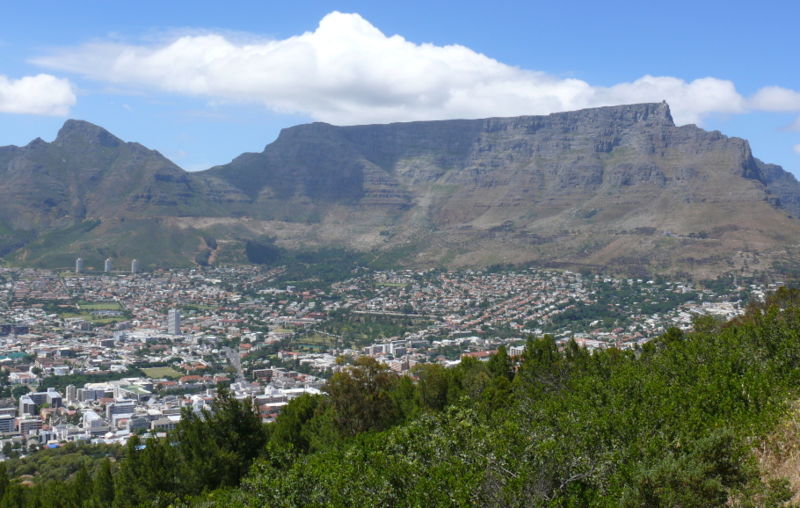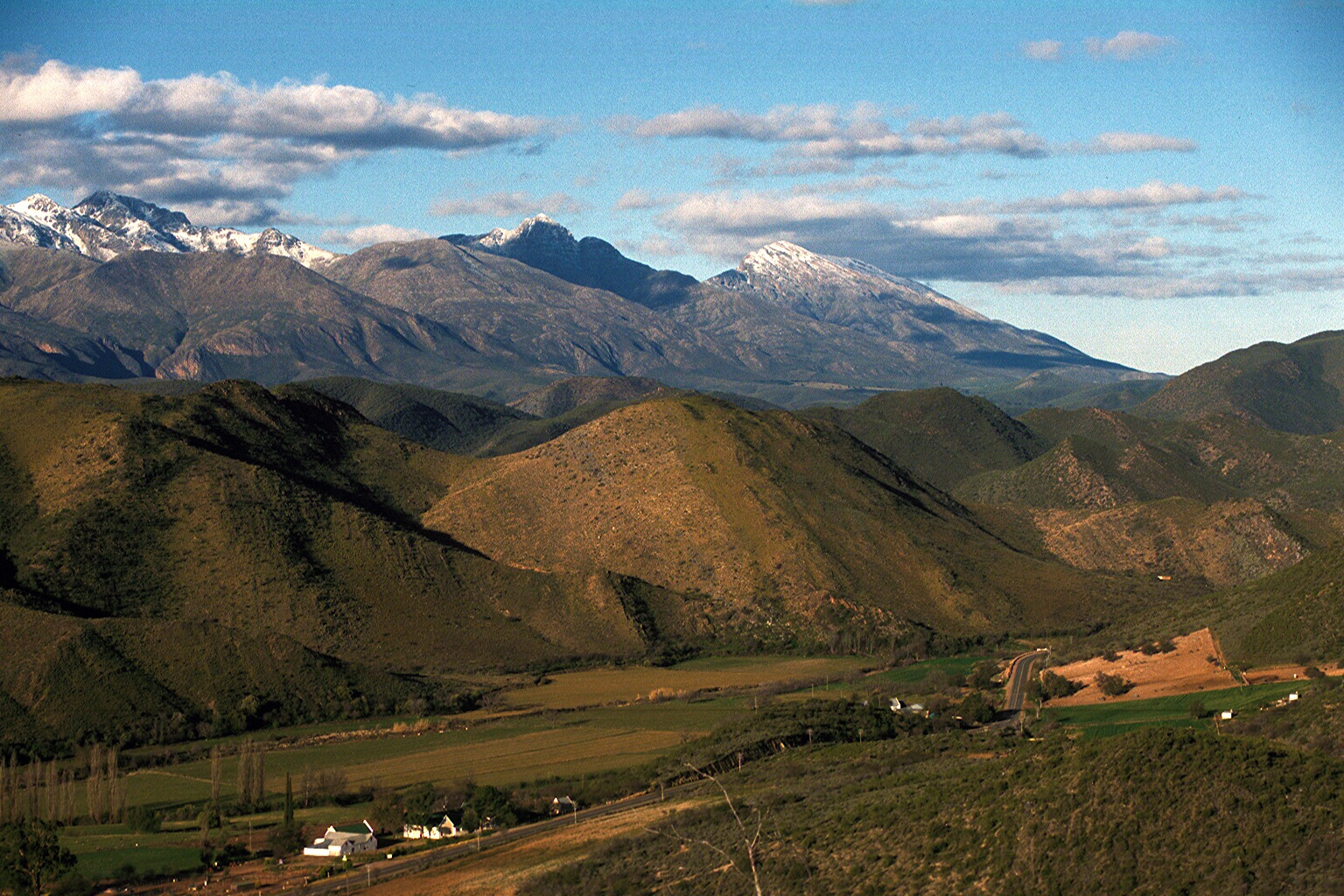
African Mountain Range Could be World's Strongest

The Earth is not fond of tall mountains.
In the world's steep mountain ranges, weathering and erosion (caused by wind, rain, ice, chemicals and rivers) work quickly to bring down tall summits. Sometimes, ridges come up so fast they fall apart through landslides or earthquakes. Landslides tear down the Southern Alps in New Zealand at a geologically speedy 32 feet (10 meters) per 1,000 years. Weathering makes old mountain ranges smooth and worn, like the Appalachians, and only young upstarts like the Himalayas display jagged peaks.
But South Africa's Cape Mountains are an exception to the rule, scientists have discovered. The steep cliffs have some of the slowest erosion rates on the planet, said Alexandru Codilean, a geomorphologist at the GFZ German Research Center for Geosciences in Potsdam.
Steep slopes, slow erosion
The picturesque snow-capped range, which rises behind Cape Town, and the city's iconic Table Mountain are both known for their sheer slopes. The slopes are as steep as other young mountain ranges, including the Andes, the Himalayas and the European Alps.
"When you see this rugged topography, you associate it with a very, very fast denudation rate," Codilean said. Denudation is the term geologists use to encompass all the processes that remove material from the Earth's surface.
Given the climate and landscape in the region, when Codilean and his colleagues set out to find out how fast Table Mountain was slipping into the sea, they expected a denudation rate of 2 to 4 inches (50 to 100 millimeters) per 1,000 years, he said.
Sign up for the Live Science daily newsletter now
Get the world’s most fascinating discoveries delivered straight to your inbox.
"What we obtained was 2 to 7 millimeters [0.08 to 0.3 inches] per 1,000 years, which is among the lowest on the planet," he told OurAmazingPlanet. "That was very surprising for such steep topography. These are proper mountains, and they probably erode a thousand times slower than the Southern Alps of New Zealand." [Infographic: Tallest Mountain to Deepest Ocean Trench]
The results were published online Jan. 17 in the journal Geology.
World's strongest
Table Mountain is made of very pure quartzite, a metamorphic rock that was once sandstone. The tiny round sand grains in the rock are almost all quartz, a mineral that is strong and combats weathering.
"What we think is causing these very low erosion rates are the very strong rocks that make up these mountains," Codilean said. "When you are sampling these rocks, when you are hitting them with hammers, it sounds like you're hitting a metal door. They are really, really strong rocks."
The quartzite resists chemical weathering and soil formation, two first steps that would help break down the rocks. As a result, the local rivers runs clear, with no sediment to act as sandpaper and further grind away at the quartzite. "We have fresh rock and clear water flowing over it and nothing is happening," Codilean said.
The quartzite also resists all manner of insults the local climate throws its way, from heavy rainfall to snow to the "Cape Doctor," the local term for the strong, persistent wind that blows through Cape Town in the summer. It also helps that the tip of South Africa has remained tectonically stable for more than 80 million years.

Cosmic radiation story
To determine the erosion rate of the mountains, the researchers analyzed radioactive isotopes of beryllium produced by cosmic rays (high energy particles that rain down on Earth from space). Isotopes are created when beryllium in rocks exposed at the surface are bombarded by cosmic rays, producing varieties of the element that have differing numbers of neutrons. The concentration of isotopes is inversely proportional to the erosion rate, so measuring the concentration of these isotopes, gives you the erosion rate, Codilean said.
While the beryllium measurements only provide a rate for the past few million years, Codilean said their results match erosion rates from studies that go back farther into the past.
"These strong rocks have sort of made these mountains survive for millions of years, and they basically haven't changed since probably the Cretaceous," he said.
The Cape Mountains are the remnants of folded rocks pushed up between 120 million to 80 million years ago. Up to 3 miles (5 kilometers) of rocks have since disappeared, but the quartzite remains.
Reach Becky Oskin at boskin@techmedianetwork.com. Follow her on Twitter @beckyoskin. Follow OurAmazingPlanet on Twitter @OAPlanet. We're also on Facebook and Google+.










